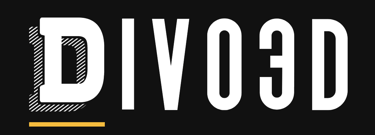Explanation of 3D printing and modeling prices
In the rapidly evolving world of 3D printing and custom modeling, understanding the factors that influence pricing is crucial for both service providers and clients. This comprehensive guide aims to demystify the cost structures behind these technologies, providing insight into the various elements that contribute to project pricing.
Part I: The Economics of 3D Printing
Material Costs: The Foundation of Pricing
The choice of printing material forms the basis of any 3D printing project cost. Different materials offer varying properties and come at different price points. Basic filaments like PLA (Polylactic Acid) are generally more affordable, while specialized materials such as ABS (Acrylonitrile Butadiene Styrene) or exotic filaments infused with wood or metal particles command higher prices.
It's important to note that material costs extend beyond just the final product. Support structures, necessary for complex geometries, and potential failed prints also contribute to the overall material expense. Projects requiring specialty filaments or those with intricate designs may therefore see higher material costs.
Print Duration: Time as a Valuable Resource
The time required to complete a print is a significant factor in pricing. Longer print times mean extended use of the printer, increased electricity consumption, and more operator oversight. This ties up resources that could otherwise be used for other projects, hence the need to factor time into the cost.
Printer Maintenance: Ensuring Longevity and Quality
Regular maintenance is crucial for ensuring consistent, high-quality prints and extending the life of the equipment. This includes routine cleaning, calibration, replacement of wear parts such as nozzles and build plates, and software updates. The time and resources devoted to these activities are factored into overall pricing structures.
Energy Consumption: The Hidden Cost
While often overlooked, electricity costs play a role in pricing. This includes power consumed by the printer itself, post-processing equipment, and climate control for the printing environment. For large or long-duration prints, these costs can be substantial.
Post-Processing: Refining the Final Product
Many 3D printed objects require post-processing to achieve the desired finish. This may involve support removal, sanding, smoothing, painting, or other surface treatments. The time and materials required for these finishing touches contribute to the final cost.
Complexity and Risk Assessment
More complex prints often carry a higher risk of failure and may require additional attention or specialized techniques. Pricing often reflects this increased complexity and risk, accounting for potential reprints or additional operator time.
Operational Overheads
Like any business, 3D printing services have operational costs that must be covered. These include workspace rent, insurance, marketing expenses, and administrative costs. A portion of these overheads is typically built into project pricing.
Part II: Valuing Custom Modeling and CAD Services
Project Complexity: The Primary Cost Driver
The intricacy of a design is often the most significant factor in determining the cost of custom modeling work. More complex designs with numerous components, organic shapes, or high levels of detail require more time and expertise to execute accurately.
Starting Point Evaluation
The initial information provided for a project greatly impacts the workload and, consequently, the price. Working from detailed blueprints is generally faster and more straightforward than creating a design from a rough sketch or verbal description. Reverse engineering from physical measurements is often the most time-intensive approach.
Iterative Design Process
Design work frequently involves multiple revisions. This iterative process includes initial concept development, client feedback integration, and final refinement. Each round of revisions adds to the project timeline and cost.
Software and Hardware Investments
Professional-grade CAD software and high-performance computers represent significant investments for designers. Specialized input devices like 3D mice or drawing tablets may also be used to enhance efficiency. The costs associated with these tools are often reflected in service pricing.
Designer Expertise and Experience
More experienced designers typically command higher rates, justified by their efficiency, specialized knowledge, and the quality of their work. Their expertise often results in better designs and fewer revisions, potentially offering value despite higher hourly rates.
Project Timeline Considerations
Rushed projects or those with tight deadlines may incur premium pricing. This accounts for potential overtime work or the need to prioritize the project over others.
Intellectual Property and Legal Considerations
Some projects may require additional legal considerations, such as non-disclosure agreements, transfer of design rights, or licensing fees for incorporated designs. These factors can impact the overall project cost.
Client Communication and Project Management
Effective design work involves more than just CAD modeling. Time spent on client consultations, progress updates, and final presentations is typically included in the project cost.
File Preparation and Optimization
Preparing files for their intended use – whether for 3D printing, traditional manufacturing, or presentation purposes – is a crucial step. This optimization process ensures the design is suitable for its intended application and may involve additional time and expertise.
The pricing of 3D printing and custom modeling services is a complex interplay of numerous factors. From material costs and print duration to design complexity and designer expertise, each element contributes to the final project cost. By understanding these components, clients can better appreciate the value they receive, while service providers can ensure their pricing structures are fair, competitive, and sustainable.
As the industry continues to evolve, staying informed about these pricing factors will be crucial for anyone involved in 3D printing and custom modeling projects. Whether you're a service provider or a client, this knowledge will help you navigate project costs more effectively, leading to more successful collaborations and outcomes.


